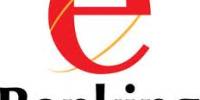Introduction
Background
“Advertising has been around for thousand of years. Once way of looking at the cave paintings of Lascaux, which are about 16,000 years old, is advertising […]” (Sangeeta Sharma, 2006, page no. 18)
“Advertising can be traced back to the very beginnings of recorded history. Archaeologists working in the countries around the Mediterranean Sea dug up signs announcing various events and offers. The Romans painted walls to announce gladiator fights […] during the Golden Age in Greece, town criers announced the sale of cattle, crafted items and even cosmetics […]” (Kotler et al. 2002, p. 661).
Today, advertising is a multi-billion industry, employing hundreds of thousands of people and affecting billions of people’s lives worldwide. Yet, seeing as advertising clutter has increased tremendously and is more intense than ever, it is vital that companies differentiate themselves from competitors by creating even more powerful, entertaining and innovative advertisement messages, as well as sponsoring different events.
International advertisement spending exceeded $800 billion (http://techcrunch.com) in 2010, it is believed that spending will maintain a 7 per cent growth rate for the next couple of years, increasing to an estimated $820 billion this year and to $852 billion next year. However, as a consequence of long-term changes, such as the increase of a larger and more diverse range of media, as well as the arrival of new technologies, particularly the Internet, consumers have become better informed than ever, and as a result, some of the traditional advertising methods are no longer as effective as they used to be (www.economist.com). Instead, firms have increasingly employed other marketing tools, such as corporate sponsorship of sports, arts and cultural events to name a few (Ruth et al. 2003).
Yet, as a result of globalization, the use of advertisement across cultural borders has grown immensely, and while one expert claims that the average person is daily exposed to 1,600 advertisements, another expert estimates the total number to be as much as 5,000 a day (Armstrong et al. 2005), “from billboards to bumper stickers to logos on caps and T-shirts”
Mobile phone has become an indispensable part of Bangladesh’s everyday-life and has made a “safe haven” in one of our pockets much like our wallet that we never want to leave at home while we head for our work! Thanks to the telecom-revolution and its relentless evolution that together have made it possible even in developing countries like Bangladesh. This is the dominant device that we now express ourselves through, get our work done and share our pains and pleasures with. However, more stress has been laid upon explaining to the public clearly and simply the services which operators have to offer, and perhaps to trace the constructive work performed by companies in establishing the industries of the country.
Under this circumstance a better understanding of the advertising and its practice by telecom companies may provide the telecom companies authority to develop a strong brand. However advertising is a key strategy consideration for most marketers to build strong brand. The goals of advertising activities are noble and a telecom companies is expected to perform its role as best as it can while seeking the pleasure. The research introduces advertisements’ effect to build a strong brand.
Objective
The overall purpose of this paper is to gain a deeper understanding of the effect of advertisement on branding. Specifically, we want to explore the effect of advertising campaigns to build a strong brand image of telecom companies in Bangladesh. We also want to study whether or not there is a relationship between the advertisement and branding.
Limitations
We have limited our research to the some mobile phone operators, rather than the entire telecom industry. Moreover the study is also made only on the customer care of telecom companies within Dhaka city not over the country. The high officials are very busy in their work, so each and every time I faced difficulties gathering and reporting the information.
Theoretical Framework
Chapter two introduces the theories that are relevant to the purpose of this thesis. The following theories that are presented below are: consumer preferences, target group, brand, advertisement and sponsorship.
Finally, the chapter ends with the analysis model and hypothesis.
Brand
A brand can be defined as a “name, term, symbol, or design, or a combination of them, which is intended to signify the goods or services of one seller or group of sellers and to differentiate them from those of competitors” (Keller 1993, p. 2). Brand image takes place when brand associations held in the mind of consumers are conveyed onto a consumer’s perception about a brand. These associations can either be developed from direct experience with the product, from the information communicated by the company, or from previous associations held about the company and origin, etc. (Martinez et al. 2003).
A brand is a distinguishing name or symbol designed to:
















